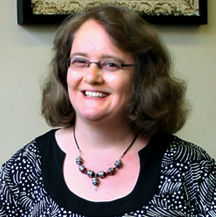
Mathematics in the real world: Mathematics of Crime
Tuesday April 10, 2012 at 16:00, Wachman 617
There is an extensive applied mathematics literature developed for problems in the biological and physical sciences. Our understanding of social science problems from a mathematical standpoint is less developed, but also presents some very interesting problems. This lecture uses crime as a case study for using applied mathematical techniques in a social science application and covers a variety of mathematical methods that are applicable to such problems. We will review recent work on agent based models, methods in linear and nonlinear partial differential equations, variational methods for inverse problems and statistical point process models. From an application standpoint we will look at problems in residential burglaries and gang crimes. Examples will consider both "bottom up" and "top down" approaches to understanding the mathematics of crime, and how the two approaches could converge to a unifying theory.
Mathematics in the Real World: Swarming by Nature and by Design
Wednesday April 11, 2012 at 16:00, Wachman 617
The cohesive movement of a biological population is a commonly observed natural phenomenon. With the advent of platforms of unmanned vehicles, this occurrence is attracting renewed interest from the engineering community. This talk will review recent research results on both modeling and analysis of biological swarms and also design ideas for efficient algorithms to control groups of autonomous agents. For biological models we consider two kinds of systems: driven particle systems based on force laws and continuum models based on kinematic rules. Both models involve long-rage social attraction and short range dispersal and yield patterns involving clumping, mill vortices, and surfacetension-like effects. For artificial platforms we consider the problem of boundary tracking of an environmental material and consider both computer models and demonstrations on real platforms of robotic vehicles. We also consider the motion of vehicles using artificial potentials.
Mathematics in the Real World: Geometric methods for image processing and data analysis
Thursday April 12, 2012 at 16:00, Wachman 617
This talk will be an overview of geometric methods in image processing developed by my research group. Applications include hyperspectral imaging, image inpainting, pan sharpening, deblurring, and statistical density estimation. Mathematical methods include the fast solution of higher order PDEs, methods that combine wavelet based methods with nonlinear geometric models, dictionary based methods, and graph based methods.
